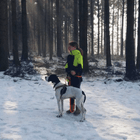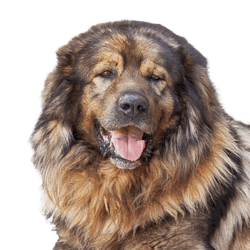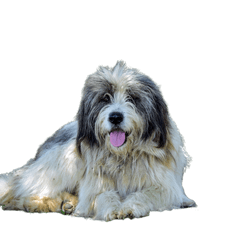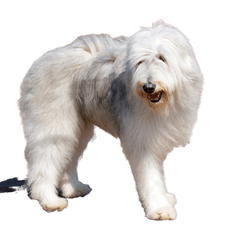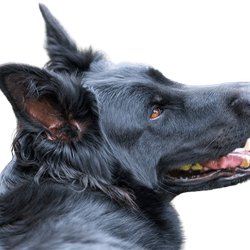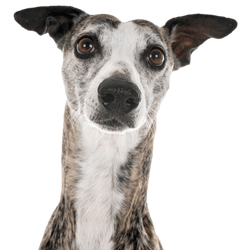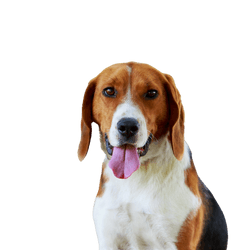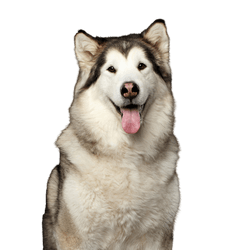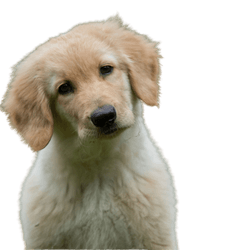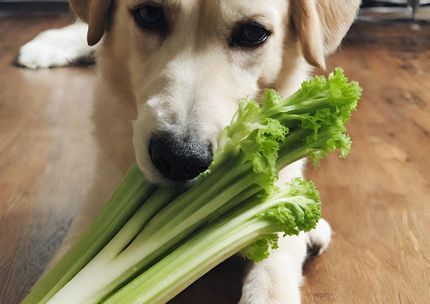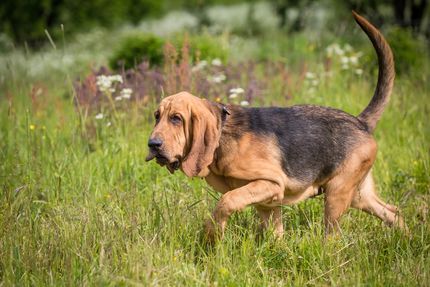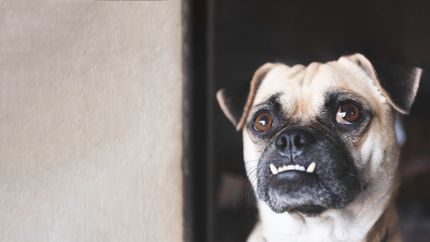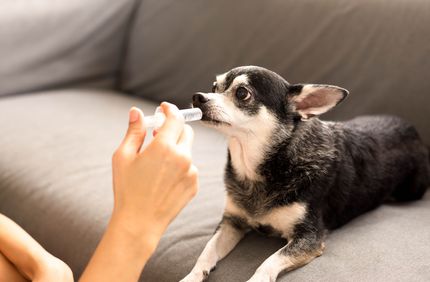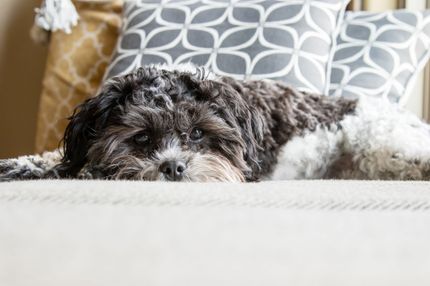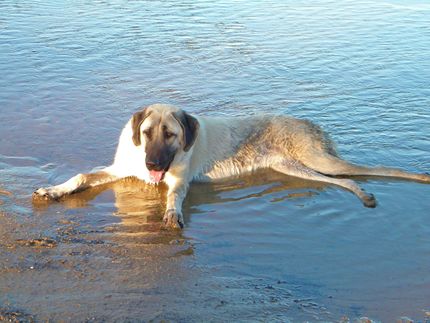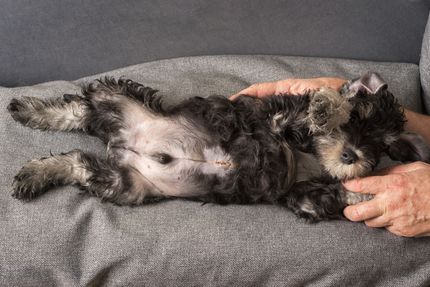Facts & Origin
Origin of the American Akita
The American Akita has its roots in the land of the rising sun, Japan. It is originally descended from the Nordic dogs that came to the region with the Ainu, an indigenous people of Japan.
History of the American Akita
The origins of the American Akita go hand in hand with the history of the Japanese Akita. As early as 1603, "Akita Matagis", medium-sized dogs specially bred for bear hunting, were used in the Akita region. From 1868, crossbreeding with Tosa and Mastiffs began, which made the breed larger but changed characteristic features of the Spitz type. Dog fighting was stopped in 1908, but the breed survived and developed into a large Japanese breed. In 1931, nine Akitas were recognized as"natural monuments".
Distinction between Japanese and American Akitas
During the Second World War, dog furs were used for military clothing and, apart from German shepherds, all other dogs were confiscated. Nevertheless, some tried to preserve the breed by crossing it with German shepherds. After the war ended, the Akita population was severely depleted and there were three types: Matagi Akitas, fighting Akitas and German shepherd Akitas. Breeding was rebuilt and the Kongo-go from the Dewa bloodline gained temporary popularity. Akitas of this line, which showed characteristics of Mastiffs and German Shepherds , were brought to the USA by military personnel, where they fascinated breeders.
Recognition of the breed
The American Club of Akitas was founded in 1956, and the AKC officially recognized the breed in October 1972. However, the Akitas developeddifferently in Japan and the USA, as new Japanese bloodlines could not be imported into the USA due to a lack of pedigree. As a result, a separate breed with unmistakable characteristics developed in the USA, while in Japan the reconstruction of the pure breed with Matagi Akitas was driven forward.
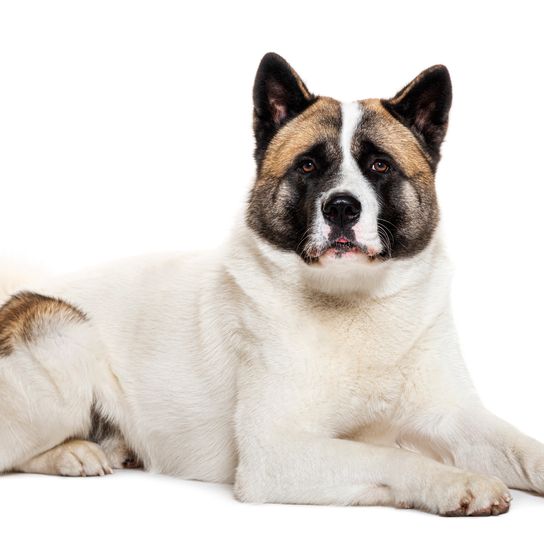
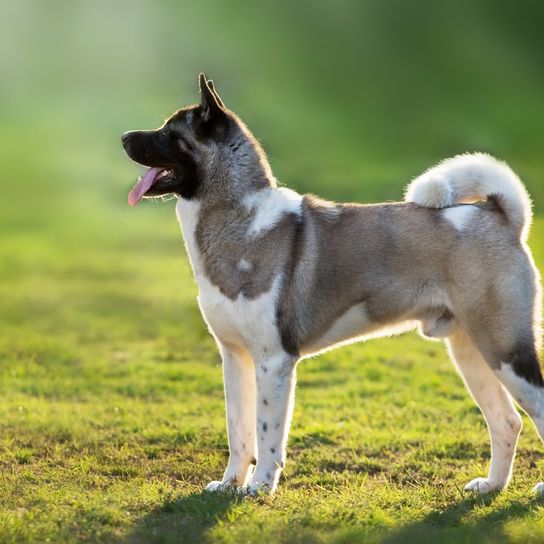
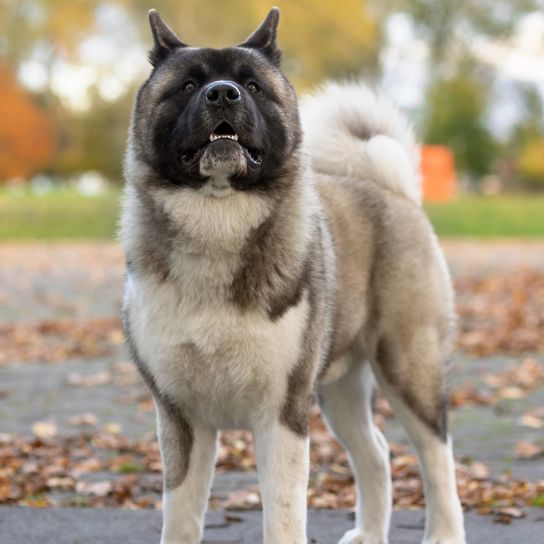
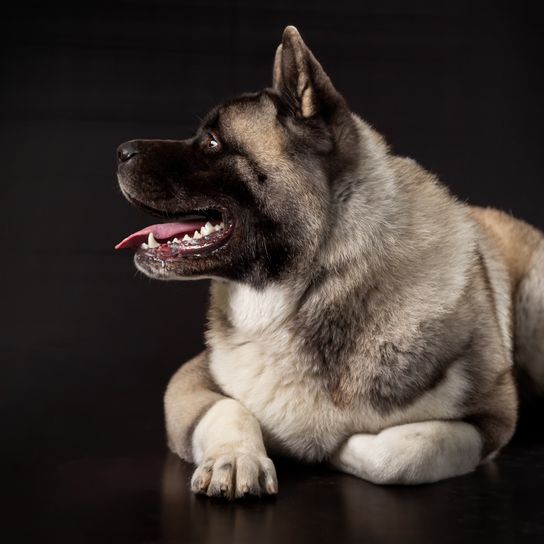
| Alternate Name | American Akita |
| Origin | Japan |
| Life expectancy | 10 - 12 years |
| Care requirements | low-maintenance |
| Activity level | average to high |
| FCI group | Asian Spitz and related breeds |
| AKC group | not recognised |
| KC group | not recognised |
Attitude, character and temperament of the breed
What character does an American Akita have?
The American Akita is known for its friendliness, which it owes to its close ties to its family. It is also attentive and never misses an opportunity to observe its surroundings closely. Its receptiveness is also remarkable, as it learns quickly and can adapt to new situations.
In terms of obedience, it is obedient and responds well to training and instructions. At the same time, the American Akita is also courageous, which makes him a reliable companion and protector.
Character
Usage
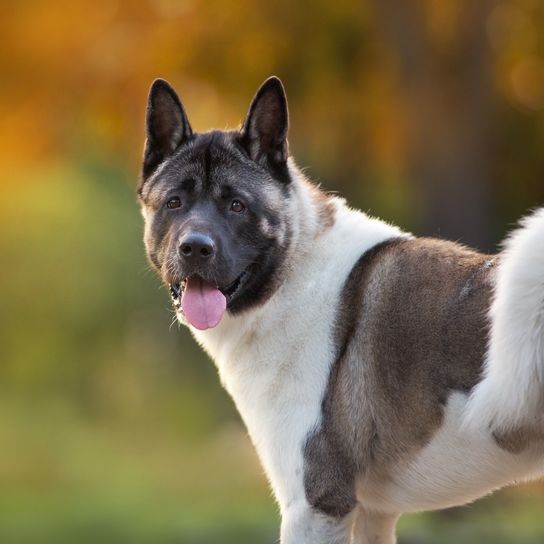
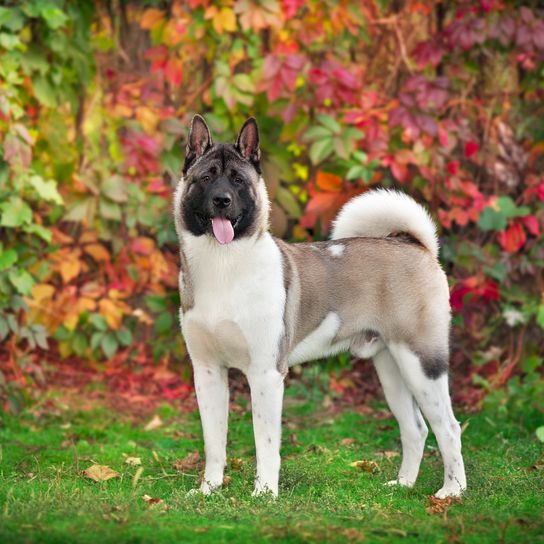
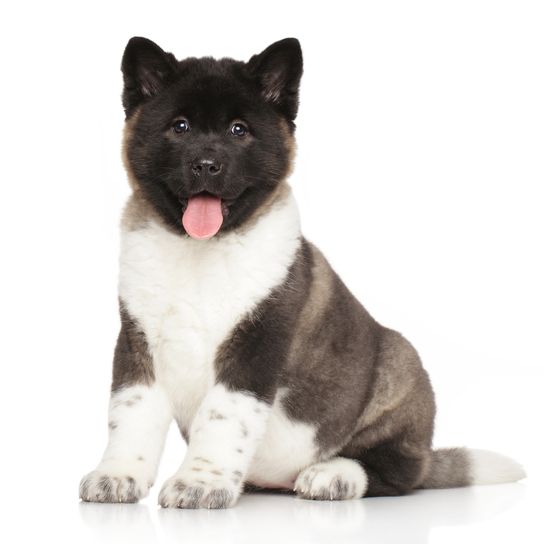
Grooming requirements
The American Akita has a thick, double coat that requires regular grooming. During the shedding season, it should be brushed daily to remove dead hair and prevent excessive shedding inside the home. Outside of these times, a weekly brushing is sufficient.
It is recommended that the Akita is only bathed when necessary , as frequent washing can strip the natural oils from its coat.
Health aspects
American Akitas are generally healthy dogs, but can be prone to certain conditions:
- Hip dysplasia: A genetic condition in which the hip bone does not fit correctly into the hip joint.
- Progressive retinal atrophy (PRA): An eye disease that can lead to blindness.
- Autoimmune diseases and skin problems are also known.
Regular visits to the vet and awareness of potential health problems will help to keep your Akita healthy and happy.
Information on buying and breeding
If you are considering buying an American Akita, consider the following aspects:
- Genetic testing: This is essential to ensure that no hereditary diseases are passed on.
- Standard: Breeders should use the breed standard set by Kennel Clubs as a guideline.
- Socialization: Akitas should be well socialized from a young age to ensure that puppies grow up with an even temperament.
Overall, the American Akita requires careful care and attention to its health. Responsible breeding goes a long way to ensuring the breed's well-being.
There are also plenty of dogs in shelters who are eagerly looking for a nice home. It's best to find out locally to find a suitable partner for life!

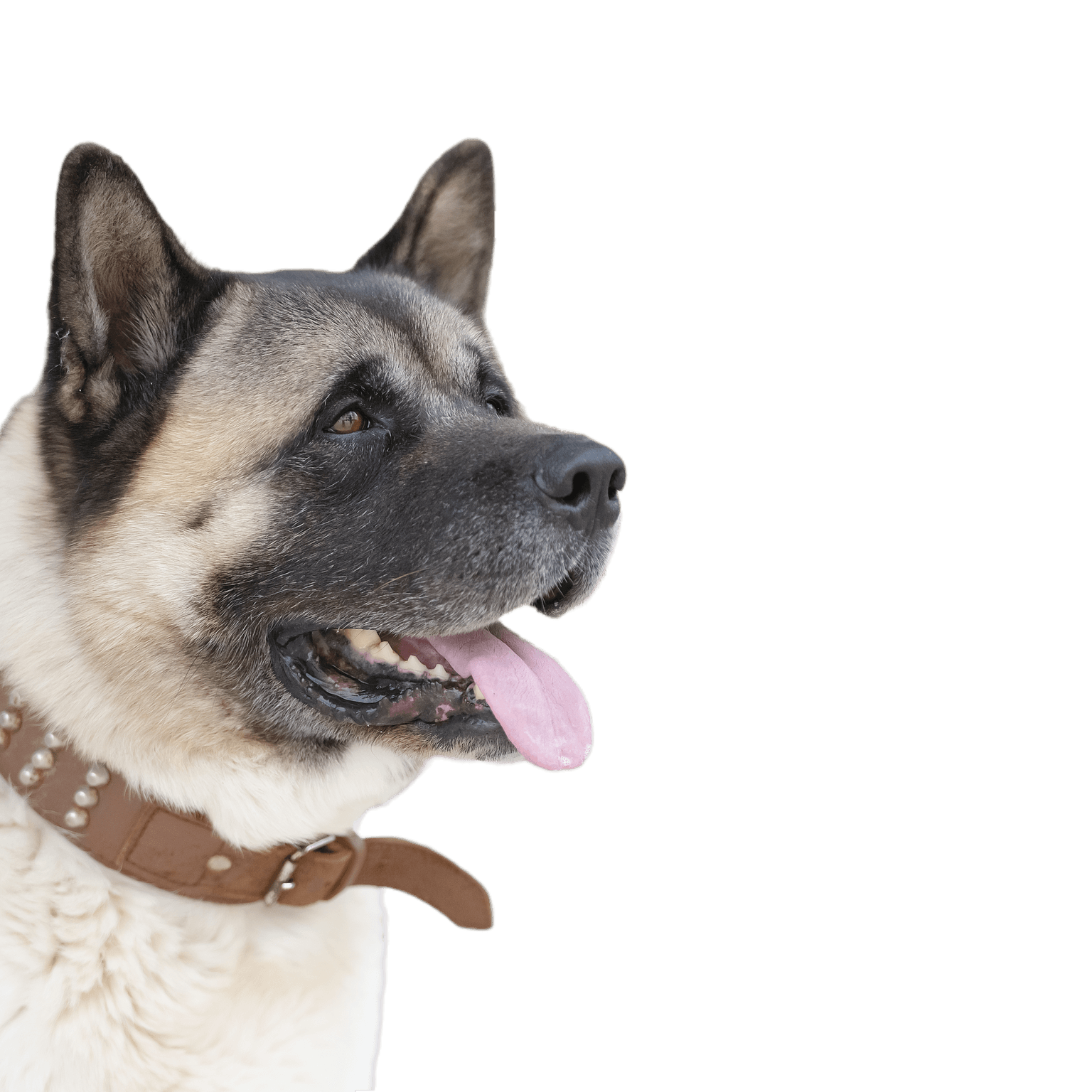
What does an American Akita look like?
The following description is given by the FCI breed standard. The dogs are judged according to these criteria. The Akita is classified as a companion dog in Group 5, Section 5 ("Asian Spitz and related breeds").
The head
The head of the American Akita is massive and yet harmoniously proportioned to the entire body. In relaxed situations it shows no wrinkles and has a blunt triangular shape when viewed from above. The top of the head is flat and broad between the ears, with a slight furrow running gently upwards over the forehead. The stop is well defined, but not too abrupt.
The skull shows a broad and black nasal bridge. Slight and faded loss of pigmentation is only acceptable in white dogs, black being preferred. The muzzle is broad, deep and full, the lips are black and not pendulous, and the tongue is pink in color. The bite is strong and powerful, the teeth are strong and regular, and a complete bite is preferred, with a scissor bite being ideal, but a pincer bite is also acceptable.
The eyes are dark brown, relatively small and non-protruding, with an almost triangular shape. The edges of the eyelids are black and lie close to the eyeball. The ears are tightly erect, small in relation to the head, triangular with a slightly rounded tip, broad at the base and not set too low. They are carried slightly tilted forward over the eyes when viewed from the side.
The body
The neck is thick and muscular, with minimal dewlap, relatively short and gradually broadening towards the shoulders. The strongly arched neck merges harmoniously into the base of the skull.
The body of the American Akita is longer than high, the skin is not too thin and not too tight or too loose. The back is horizontal, the loins are strongly muscled, the chest is broad and deep, with well sprung ribs and well developed sternum. The lower profile and the belly are moderately tucked up.
The tail is strong and profusely coated, set high and carried over the back or leaning against the flank. It can be three-quarters, fully or double curled, with the tip always reaching to the back or lower. At the base the tail is large and strong, and when hanging or stretched, the last tail vertebra reaches to the hock. The coat is coarse, straight and dense, but does not form a flag.
The limbs
The limbs of the forequarters show a heavy bone structure, are straight when viewed from the front and have powerful shoulders which are moderately strongly laid back. The pastern is inclined forward. The forefeet are straight cat feet, well knuckled, with thick pads.
The hindquarters are strongly muscled, the width and bone structure correspond to the forequarters. The thighs are strong and well developed, the stifle joint is moderately angulated and parallel when viewed from behind. The hock joint is set quite low and turned neither in nor out. The hind feet are straight cat feet, well knuckled, with thick pads.
The gait
The gait is powerful and expansive, with moderate drive and impulsion. The hind legs move in line with the forelegs, with the back remaining strong, firm and horizontal.
The coat
The coat is stocky. The undercoat is thick, soft, dense and shorter than the outer coat, which is straight, harsh and stands slightly off the body. The coat is short on the head, under the legs and on the ears. The length of the hair at the withers and on the croup is about 5 cm and is therefore slightly longer than on the rest of the body, except on the tail, where the hair is longest and most luxuriant.
With regard to colors, all variations such as red, fawn, white, etc. are permissible, including brindle and piebald. The colors are bright and clear, the markings are harmoniously distributed, with or without mask or blaze. Solid white dogs have no mask, and piebald dogs have large, regularly arranged patches on a white background, which may cover the head and more than one third of the body. The undercoat can be a different color than the topcoat.
The size
The size of the American Akita varies from 66 to 71 cm for males and 61 to 66 cm for females at the withers.
| Fur length | medium |
| Fur | - |
| Ear shape | Standing Ears |
| Tail | rolled up |
| Anatomy | rugged |
| Size ♀ | 61 - 66 cm |
| Weight ♀ | 34 - 50 kg |
| Size ♂ | 66 - 71 cm |
| Weight ♂ | 34 - 50 kg |
| Suitable For | - |



Known Diseases
Arthrosis
Osteoarthritis is one of the most common diseases in dogs. Dogs have an innate, strong urge to move
Allergies
Can occur in a number of breeds, regardless of genetic makeup.
FAQ
-
Males should be between 66 and 71 cm at the withers, females between 61 and 66 cm.
-
American Akitas are considered loyal, courageous and independent. They are often reserved towards strangers, but loving and protective of their family.
-
Yes, they can be excellent family dogs, especially if they are well socialized and trained. They are loyal and protective, especially towards children.
-
They have a thick coat that requires regular grooming to prevent matting. They also need regular exercise and mental stimulation.
-
They can be territorial and protective, which leads to strong guarding behavior. However, with good training and socialization, they can be gentle and even-tempered.
-
Akitas need regular, but not excessive, exercise. Long walks and controlled play are ideal to keep them healthy and happy.
-
The life expectancy of an American Akita is usually between 10 and 15 years, depending on health and lifestyle.


